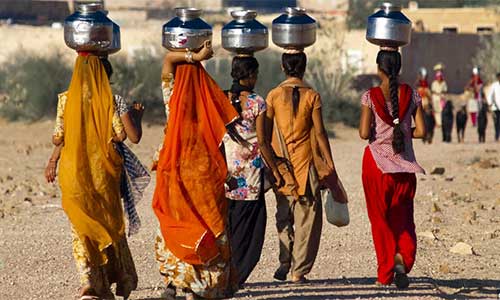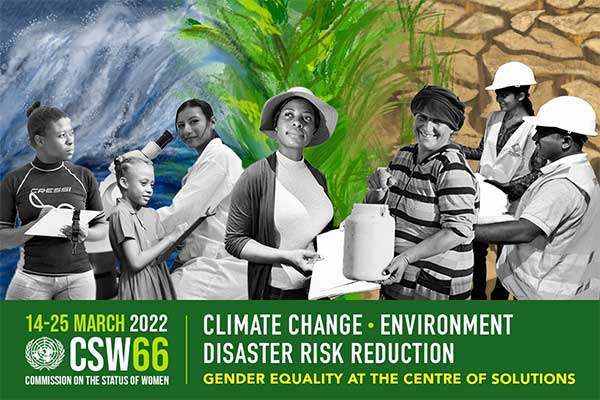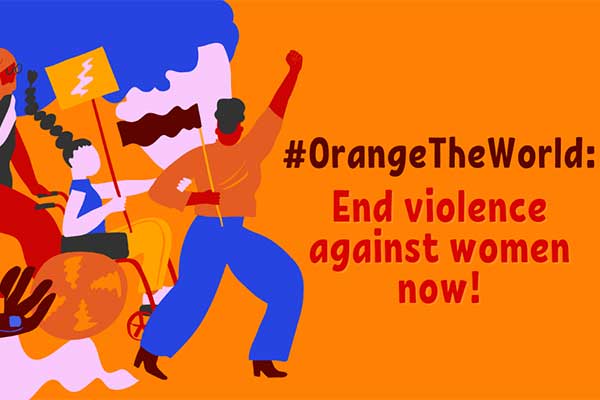
Climate Change: Women & Girls
By Wendi Momen (MBE) – NAWO Chair
The consequences of climate change are severe, especially for those already affected by poverty and food insecurity, lack of access to education, health care and clean water, or by prejudices that limit the full exercise of their rights and for whom climate change has already had a negative impact on their lives and livelihoods.
One of the most pervasive social challenges besetting communities around the world is the marginalization of girls and women a condition further exacerbated by the impacts of climate change. Around the world, women are largely responsible for securing food, water and energy for cooking and heating. Scarcity of resources arising from climate change intensifies a woman’s and a girl’s burden and, at best, leaves less time to earn an income, attend school or care for the family. Natural disasters exact a heavier toll on women given their lack of access to information and resources, and, in some cases, their inability to drive, swim or even leave the house alone. As families strive to cope with these changes, they may resort to negative coping strategies, for example, forcing girls to leave school or to marry early, which itself increases the risk of gender-based violence.
Climate change threatens basic human rights, such as the right to life and the right to a standard of living adequate for the health and well-being of oneself and of one’s family, including food, clothing, housing and medical care and necessary social services, and the right to security when one is unable to work. These rights are already difficult of achievement for women in many places across the globe and climate change exacerbates this disparity with men.
Climate change threatens basic human rights, such as the right to life and the right to a standard of living adequate for the health and well-being of oneself and of one’s family, including food, clothing, housing and medical care and necessary social services, and the right to security when one is unable to work. These rights are already difficult of achievement for women in many places across the globe and climate change exacerbates this disparity with men.
Climate change disrupts communities as well as individual lives and families. Agriculture and fishing are disrupted, risking food security and requiring women and girls, who are largely responsible
for searching for water and firewood, to spend more time doing this and having to walk further from home, putting them at greater risk of gender-based violence.
Climate change affects women and girls differently than men and boys, owing to a gendered division of labour, cultural restrictions and different societal roles that make women’s work less secure,
bars them from taking on roles that might improve their situation and exposes girls and young women to sexual exploitation and trafficking.
Indeed, at whichever area of human life one looks, from economic stability to maternal health to education, women and girls are generally worse off already and are even more negatively impacted
by climate change.
It would be a mistake, however, to cast women as the victims or simply as under-resourced members of society; they represent perhaps the greatest source of untapped potential in the global effort
to overcome the challenges of climate change. Their responsibilities in families, in communities, as farmers and as stewards of natural resources make them uniquely positioned to develop strategies for adapting to changing environmental conditions. The traditional knowledge of indigenous women can be particularly useful for developing locally-based responses to the effects of climate change. Women’s distinct knowledge and needs complement those of men, and must be duly considered in all arenas of community decision-making. It is in relationship and consultation with one another that the most effective strategies for mitigation and adaptation can be devised
At the governmental and international levels, including women in the formulation of disaster preparedness and response plans and incorporating their knowledge and lived experience will ensure
such plans include the particular needs of women and girls, are closely aligned to the sustainable development goals, and have the universal application that healthy families, communities and nations require if they are to survive.
Often the gender dimension is left out of legal and scientific frameworks guiding climate change negotiations. Communities, governments and the United Nations must give more attention to
the gender dimensions of climate change and include a gender dimension in their response to climate change and in their ongoing and future negotiations of climate change agreements.
Efforts to give due attention to this critical dimension of climate change, however, cannot be limited to ad hoc measures. Instead, they must be reinforced by efforts to include and raise up the voices of women in all arenas of human endeavour so as to create the social conditions in which the most fruitful collaboration and innovation can take place.




